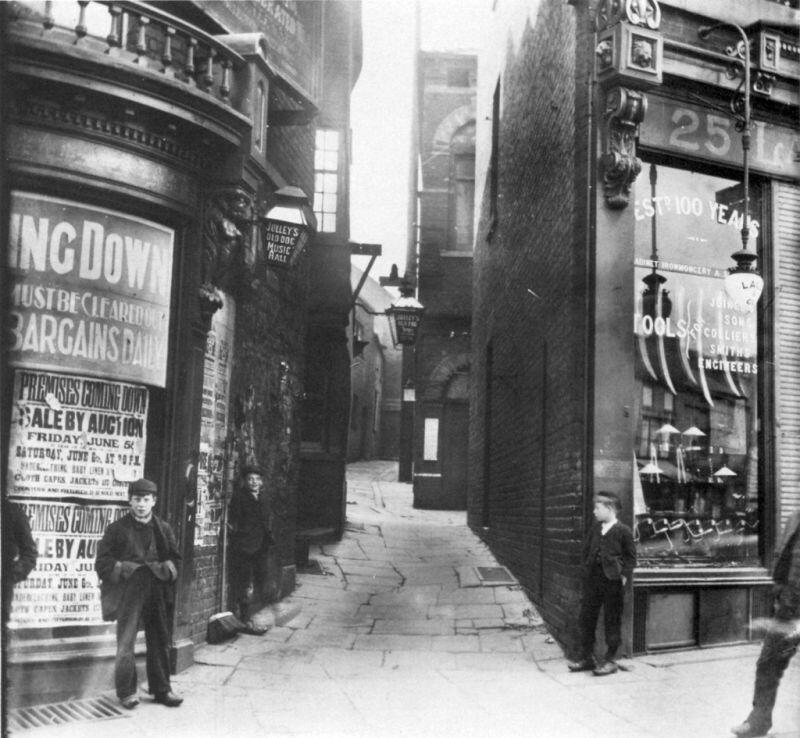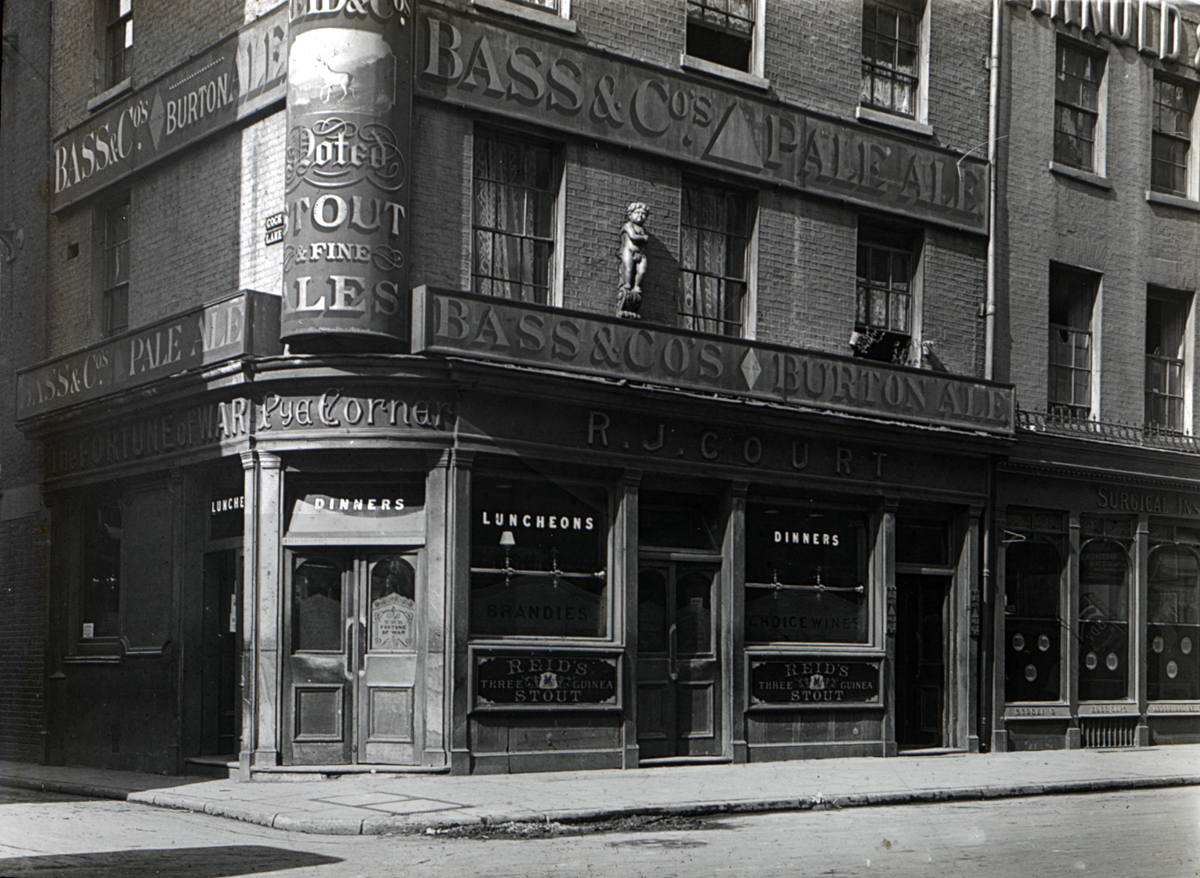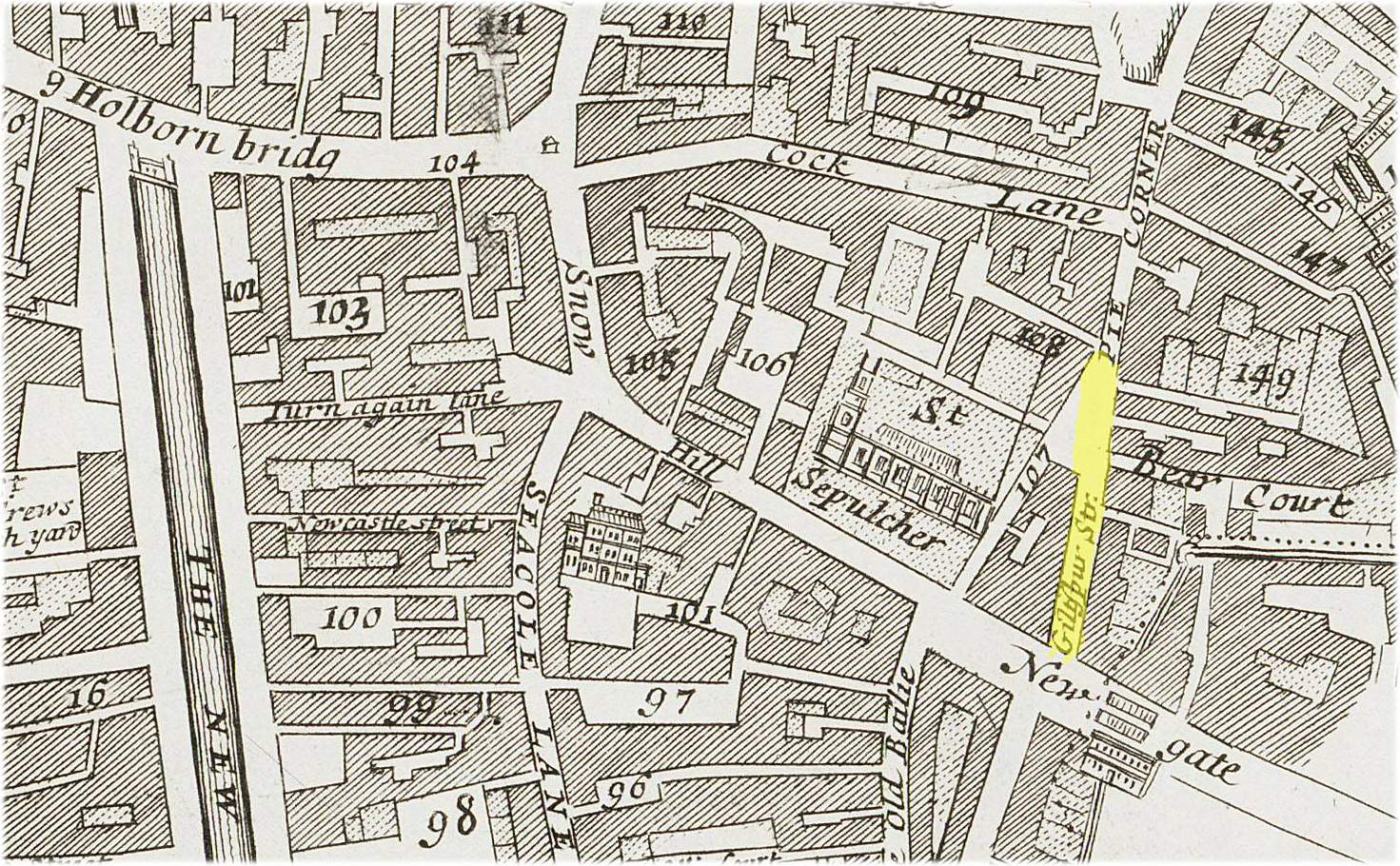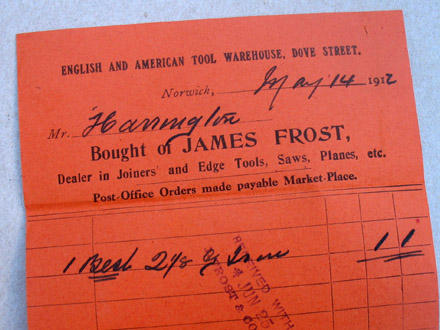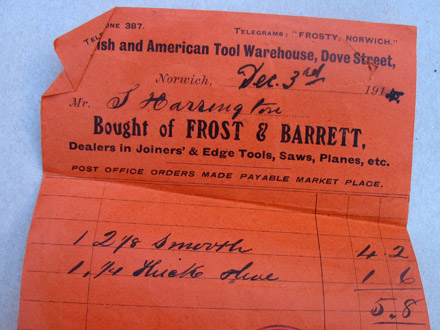
You may have seen Jim’s name pop up sporadically when Wictor Kuc, (the owner of the website WK Fine Tools), announces a new post from him via Twitter. I think Jim must have some arrangement with Wiktor as a regular contributor. That is a very good thing, if like me, you have a love of traditional woodworking and the tools that are used.
I first met Jim very briefly at Richard Arnold’s Open Day last year. The day was so interesting, I got a bit carried away photographing all the fine tools and blogging some technique from Richard, that I didn’t put two and two together until I returned home and I realised I’ve read many a post from Jim on the UK Workshop forum for hand tools.
It’s very clear that Jim has some rare skills not only in retaining knowledge about the older tools and their makers, but he also excels in making those tools himself.
Take a glance at the page Wiktor has put up, showing Jim’s projects.
One of my favourites is the project showing how Jim recreates an original design for the classic 19thc English brace. Superb work.

Jim as led a very interesting life as you will see from the brief bio, but I’m sure we will now see a lot more woodworking now that he has decided to retire. (On the same project you will also see Douglas Coates’ ‘Ad-Vice’, which I blogged about earlier. (I have no affiliation with Jim or Douglas, I just want people to know these guys are out there.)
If you would like to contact Jim directly to ask him about his projects, you can get hold of him as his own website, www.ktproductions.co.uk.
